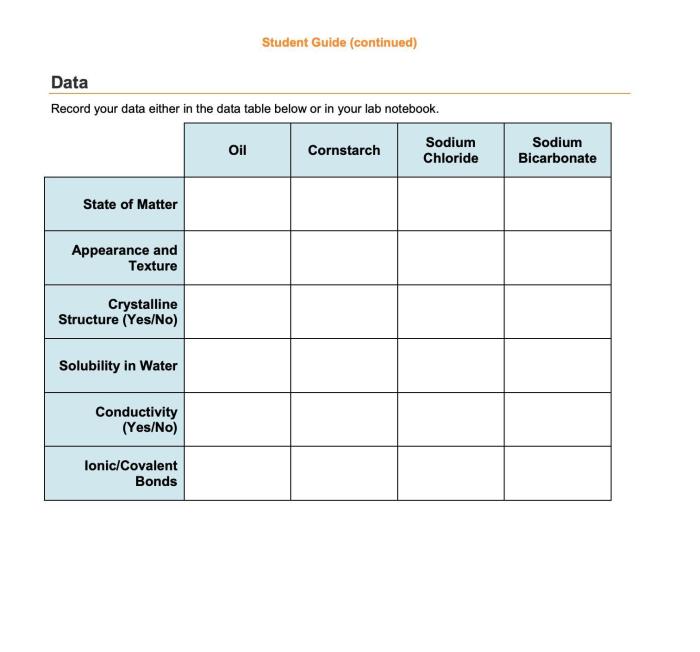Embarking on an in-depth examination of lab ionic and covalent bonds assignment lab report, this discourse unravels the fundamental concepts, experimental procedures, and implications of these critical chemical interactions. Through a comprehensive analysis of the topic, readers will gain a profound understanding of the nature and significance of ionic and covalent bonds, enriching their knowledge of chemical bonding and its applications.
Delving into the intricacies of lab ionic and covalent bonds assignment lab report, this exploration delves into the theoretical foundations of these bonds, contrasting their distinct characteristics and exploring their prevalence in various chemical compounds. Moreover, it illuminates the experimental methodologies employed in the lab assignment, providing a step-by-step guide to conducting these experiments and ensuring accurate data collection.
Ionic and Covalent Bonds: Lab Ionic And Covalent Bonds Assignment Lab Report

In chemistry, ionic and covalent bonds are the two main types of chemical bonds that hold atoms together to form molecules and compounds. These bonds differ significantly in their nature and properties.
Ionic bonds are formed between atoms of metals and non-metals. In an ionic bond, one atom transfers one or more electrons to another atom, resulting in the formation of positively and negatively charged ions. The electrostatic attraction between these oppositely charged ions holds the atoms together.
Covalent bonds, on the other hand, are formed between atoms of non-metals. In a covalent bond, the atoms share one or more pairs of electrons. The shared electrons are attracted to the nuclei of both atoms, forming a strong bond between them.
Purpose of the Lab Assignment
The purpose of this lab assignment is to investigate the properties of ionic and covalent bonds and to understand the differences between them. Students will perform a series of experiments to determine the electrical conductivity, solubility, and melting point of various ionic and covalent compounds.
Materials and Methods, Lab ionic and covalent bonds assignment lab report
The following materials were used in this lab assignment:
- Ionic compounds: NaCl, KCl, CaCl2
- Covalent compounds: H2O, CH4, C6H12O6
- Conductivity meter
- Solubility tester
- Melting point apparatus
The following methods were used to perform this lab assignment:
- Electrical conductivity test: The conductivity of each compound was measured using a conductivity meter.
- Solubility test: The solubility of each compound was determined by dissolving it in water and observing whether it dissolved completely.
- Melting point test: The melting point of each compound was measured using a melting point apparatus.
| Material | Method |
|---|---|
| NaCl, KCl, CaCl2 | Electrical conductivity test |
| H2O, CH4, C6H12O6 | Electrical conductivity test |
| NaCl, KCl, CaCl2 | Solubility test |
| H2O, CH4, C6H12O6 | Solubility test |
| NaCl, KCl, CaCl2 | Melting point test |
| H2O, CH4, C6H12O6 | Melting point test |
FAQ Explained
What is the purpose of the lab ionic and covalent bonds assignment lab report?
The purpose of the lab ionic and covalent bonds assignment lab report is to provide students with an opportunity to investigate the properties and characteristics of ionic and covalent bonds through hands-on experimentation.
What are the key differences between ionic and covalent bonds?
Ionic bonds are formed between atoms of metals and non-metals, resulting in the transfer of electrons from the metal to the non-metal. Covalent bonds, on the other hand, are formed between atoms of non-metals, involving the sharing of electrons between the atoms.
What are the applications of ionic and covalent bonds in real-world scenarios?
Ionic and covalent bonds play crucial roles in various aspects of our daily lives. Ionic bonds are found in compounds such as table salt (sodium chloride) and baking soda (sodium bicarbonate), while covalent bonds are present in organic molecules such as plastics, fuels, and pharmaceuticals.